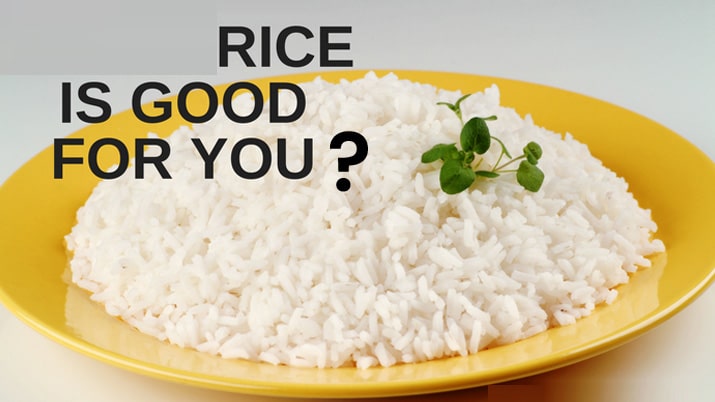Rice is the seed of the grass species Oryza sativa (Asian rice) or Oryza glaberrima (African rice). As a cereal grain, it is the most widely consumed staple food for a large part of the world’s human population, especially in Asia. It is the agricultural commodity with the third-highest worldwide production, after sugarcane and maize. Rice is the most important grain with regard to human nutrition and caloric intake, providing more than one-fifth of the calories consumed worldwide by humans. Different types of rice are cultivated in different countries, some common types of rice are White rice, Black rice, Jasmine rice, Brown rice, Red cargo rice, Parboiled rice and each one offers different health benefits.
Following are a few impacts of rice on our health:
Rice Helps in providing energy
Rice is abundant in carbohydrates and it provides enough energy to the body and aids in the normal functioning of the brain. Carbohydrates require to be metabolized by the body and be turned into functional, usable energy. The vitamins, minerals, and various organic components present in rice increase the functioning and metabolic activity of all organ systems in the body, which further increases energy levels.
White and brown rice are good sources of energy, even one can consume rice water, which is a good source of energy.
Benefits of brown rice for obesity
Consumption of rice is extremely beneficial for health, simply because it does not contain harmful fats, cholesterol or sodium. It forms an integral part of balanced diet. The low levels of fat, cholesterol, and sodium present in rice also helps to reduce obesity and the health conditions associated with being overweight.
Rice is one of the most widely used and eaten foods in the world because it can keep people healthy and satiated, even in very small quantities.
Rice can help reduce cancer risks
Consuming high-fiber foods like rice helps reduce your chances of getting cancer. Rice’s high-fiber properties aid in digestion and lowering blood pressure. Thus, it assures a healthier body overall. And a healthy digestive tract means that the body’s waste does not sit for long period of time.
By keeping the flow moving, there is a lower chance of this waste interacting with healthy cells within the body. This is good for fighting against and preventing intestinal cancer and colorectal cancer. Rice is also rich in vitamins. These vitamins include antioxidants such as Vitamin A and Vitamin C. These help to rid the body of free radicals.
Rice can be used for skin care
Rice is used for skin care both topically and by consuming it. In the form of a topical solution, one can take rice in its powdered form and apply it over the skin. This topical solution is great for skin that is inflamed as the powder will help reduce inflammation.
It is also used topically to cure other skin conditions as well. Rice water is another way to use rice as a topical solution to skin care. Rice water is used to cool off the skin that is inflamed.
Brown rice is used more often because of its phenolic compounds. These compounds work to reduce any redness and soothe irritation on the skin. And because of all the antioxidants found in rice, rice slows down the aging process that might affect the skin and delays wrinkles from appearing.
Rice helps in controlling blood pressure
Rice is low in sodium, so it is considered one of the best foods for those suffering from high blood pressure and hypertension. Sodium can cause veins and arteries to constrict, increasing the stress and strain on the cardiovascular system as the blood pressure increases. This is also associated with heart conditions like atherosclerosis, heart attacks, and strokes, so avoiding excess sodium is always a healthy solution.
Brown rice and white rice are good for patients suffering with high blood pressure. Red yeast rice is also consumed by people to control blood pressure.
Though white rice is more processed, it’s not necessarily bad. Most white rice in the US is enriched with vitamins like folate to improve its nutritional value. Additionally, its low fiber content may help with digestive issues.
However, brown rice is ultimately healthier and more nutritious. Not to mention, studies have shown that brown rice is better for diabetes, heart disease and weight maintenance.


